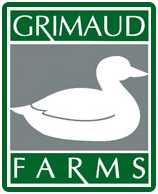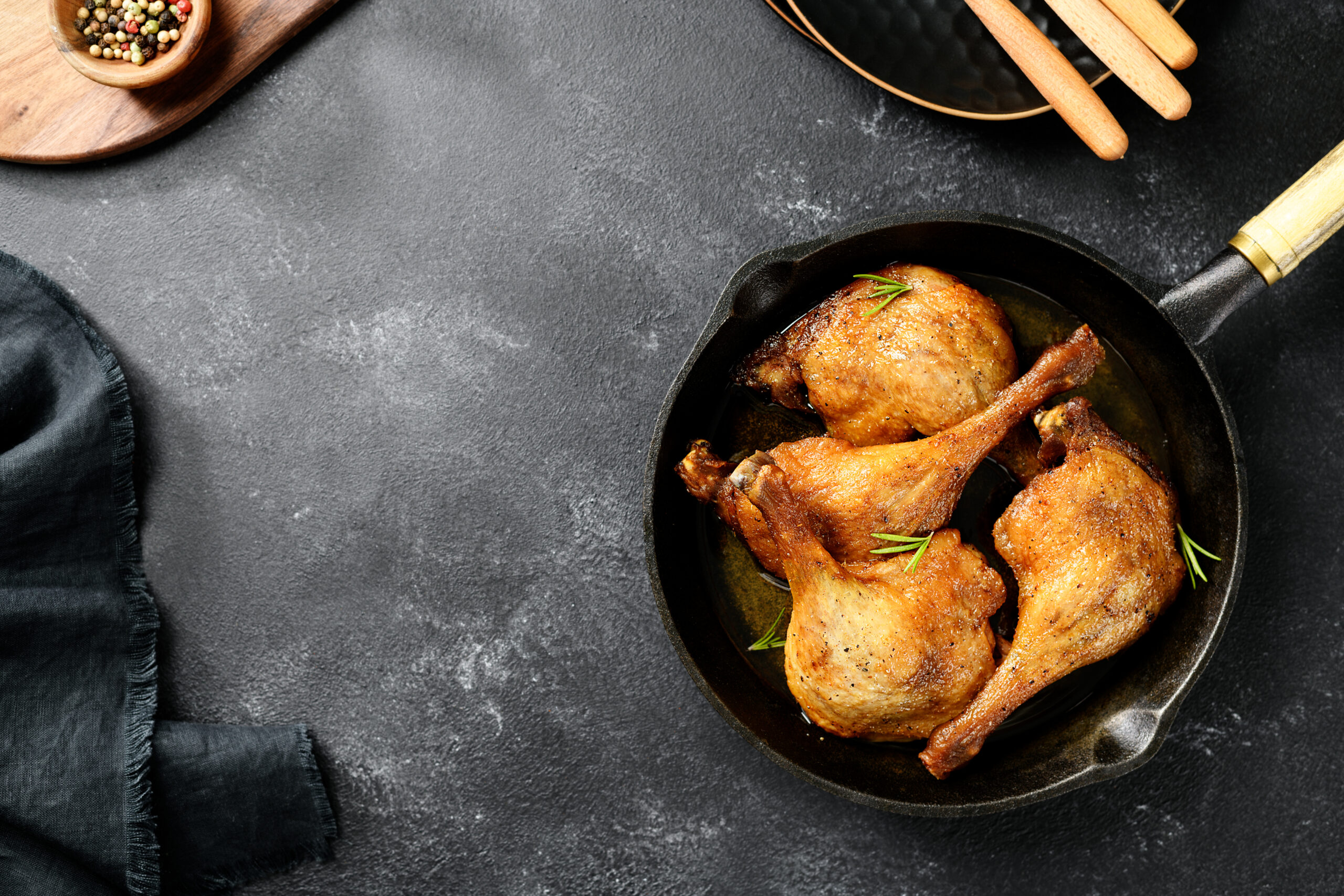CLASSIC DUCK CONFIT
PREP TIME: 24 Hours
COOK TIME 4 Hours
DIFFICULTY: Intermediate
SERVINGS: 4-6 Servings
ATTRIBUTE: Draeger’s Market
 All Culinary Chronicles
All Culinary Chronicles
Introduced to France by the Romans, ‘confit’ is a French word that means ‘to preserve.’ A traditional food preservation method, the chosen protein is rubbed with salt and then slow cooked at low temperature it in its own fat. The meat becomes fall-off the bone tender and is able to be stored for months at a time- sans refrigerator! In Gascony, France, near the border of Spain, the land is rich with ducks and geese. ‘Confit de Canard’ become a famous regional dish, and is now known world-wide as a gourmet delicacy.
This year, if you are looking for a unique and special flavor, duck confit will fit the bill! Draeger’s has sourced their Muscovy duck from Grimaud Farm in the San Joaquin Valley. Their Muscovy breeding stock is imported from France and are raised without the use of steroids, antibiotics, or growth hormones. Fed a balanced diet and allowed to fully mature, Grimaud Farms lets nature perfect their ducks. They work to provide superior duck with a dedication to excellence.
Side Note: Why is it that we only see duck confit legs? Duck breast is incredibly lean, and the prolonged cooking can make it rather dry. You can confit a duck breast, but they are better served like a red meat, cooked medium rare.

PREP TIME: 24 Hours
COOK TIME 4 Hours
DIFFICULTY: Intermediate
SERVINGS: 4-6 Servings
ATTRIBUTE: Draeger’s Market


*You only need enough duck fat to cover the duck legs. This may range between two cups and 4 cups, depending on the number and size of the legs.
While this optional finish adds an extra 45 minutes, crisping the duck confit skin makes for an extra tasty leg! Remove the duck legs from oven and turn up the heat to 465˚F. Very gently remove the legs from the rendered fat (so they don’t fall apart) and place them on a roasting rack, skin-side up. Pat off the remaining fat and let sit for a minute. While waiting, place 1” boiling water in the bottom of a new roasting pan and place the rack over the pan. Roast the legs for 40 minutes, rotating the pan once or twice, to make sure that all the skin has a chance to brown. Serve immediately once removed from the oven!
Some great side dish ideas for this dish include creamy garlic mashed potatoes, French green lentils, sautéed Swiss chard, or honey roasted carrots.
Duck preserved in its own fat is fall off the bone tender, but it has an oleaginous quality which an off-dry white wine is poised to cut through. A Pinot Gris, Picpoul, or Chenin Blanc carry the right crisp and floral merits to do the job credibly. If you prefer a red, Beaujolais, Zweigelt, or Grenache are all light bodied and fruit-forward, complimentary to duck flavor.